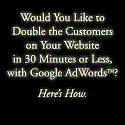

The 3 Ingredients in Our Best Selling eBook Titles
Over the last few days in Facebook groups I participate in, I’ve seen a number of people ask for advice on coming up with titles for new eBooks, courses and books.
Below is a combination of a few pieces of advice I gave in response to the topic:
Coming up with titles for our eBooks on Digital Photography School is always something that takes our team considerable time and debate.
There’s no right way to to create a title and many factors come into play but there are generally three main ingredients that I try to include in titles of eBooks:
1. Clearly Communicate What the Book is About
This is pretty obvious, but it can be tempting at times to come up with a title that is a little more cryptic. I’ve found that the clearer you are about the topic, the better (this also helps with after-sale customer service – you’ll get a lot less complaints if people know exactly what they’re buying).
2. Include a Tangible Benefit
I didn’t always do this but have noticed that our best selling eBooks tend to have one. A good example of this is the ProBlogger eBook – 31 Days to Build a Better Blog.
Do this, and you’ll get this – show the people who are pondering whether they will buy your product what they’ll get as a result of doing so. What’s in it for them?
Sometimes putting the benefit in the title is tricky, particularly if you’re looking to create a short title. In this case, we would usually create a sub-title that we prominently display.
For example, our landscape Photography eBook is ‘Living Landscapes: A Guide to Stunning Landscape Photography‘. The benefit or result is (stunning landscape photography).
So as you’re creating your product, make a list of the needs/problems/challenges that your readers face that your product solves. You may come up with multiple benefits but choose the biggest one (one that readers have at the top of their minds and that the product solves), and use that in the title.
Keep the other benefits that you’ve brainstormed handy because they will be very useful when you’re writing your sales material for the eBook.
3. If Possible Say Something Aspirational that Touches Emotion
This is not something we always do, but particularly for our Photography eBooks, we know that as we’re talking about photography (which is an aspirational topic), that when we use words that evoke some kind of emotion that we generally get a better response from readers.
Note: there’s a fine line here between manipulation and hype, and doing this well.
The example of our ‘Living Landscapes’ eBook mentioned above is a good one. ‘Living Landscapes’ communicates something about what we’re trying to do with the eBook – i.e. help readers to bring the landscapes that they photography to life.
Also in the sub-title we use ‘Stunning Landscape Photography’ rather than just ‘Landscape Photography’. The addition of an adjective not only communicates our objective with the eBook to readers, but also gets them dreaming a little about the things that our eBook will help them to unlock.
You’ll also see if you dig into the sales copy on dPS eBooks, that many of our sales pages also use this more aspirational language in how we sell our products.
Another example of this is Transcending Travel: A Guide to Captivating Travel Photography which at the time we published it was our fastest selling eBook.
You can see in the title alone the same kind of formula. You can tell what it is about (Travel Photography), there’s a clear tangible benefit and words like ‘Transcending’ and ‘Captivating’ are aspirational.
Look at the sales page and again you can see that the copy starts by aiming to touch the ‘heart’ – getting readers to think about the feeling that we all know of getting home from a trip to find that the images we’ve taken don’t capture the true spirit of our time away.
Two Last Tips on Creating Great Titles for Products:
While the above three ingredients are things that we try to get into our eBook titles, it is important to re-emphasise that there is no right way to do this.
Our approach has worked for us with our readership, but I know others take different approaches (and I’d love to hear yours below).
The two last tips I’d give also come out of our experience:
1. Test and Watch How Your Readers Respond
Not all of our titles have worked, and there have been times when we’ve used titles that I had doubts about that worked surprisingly well!
The key is to experiment and see how your readers respond. There are a variety of ways of doing this including:
- watching how readers respond to titles of blog posts – over time you’ll see some posts get read more than others and that certain words/topics/title formulas seem to resonate more than others
- test how people respond to social media updates – tweet a link to a blog post you’ve written with two alternative titles for the link and see which works best
- watching open rates of emails that you send your email subscribers – in the lead up to a product launch send an email to your list pointing them to a blog post on the topic and test different subject lines
- As your readers which title they’d be most interested in reading – we’ve done this a couple of times on Facebook with readers, showing them two covers of eBooks and asking which they like more
2. Involve Others in the Process
I learned with my very first photography eBook how powerful it was to involve others in the coming up with titles and sales copy.
I was close to launching my first eBook with the simple title ‘Portrait Photography’ when I shot Brian Clark from CopyBlogger an email asking his advice. He came back with the title ‘The Essential Guide to Portrait Photography’.
The title was much stronger and the eBook sold very well.
While not everyone might have access to email one of the best blogging copywriters around (Brian is brilliant) even tossing a title around with friends, family, colleagues and other bloggers will help you to hone your title.
These days we spend days tossing around title ideas as a team before deciding upon one and I think doing so has helped a lot. You’ll also find that as you talk it through the marketing of the product will also become easier as you’ll get more clarity about the benefits of your product and how it will help readers.
Originally at: Blog Tips at ProBlogger
Facebook comments:
No Comments »
No comments yet.
RSS feed for comments on this post. TrackBack URL
Leave a comment















